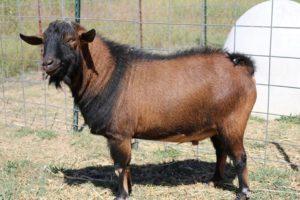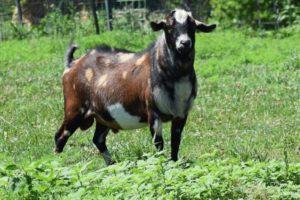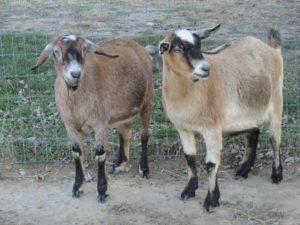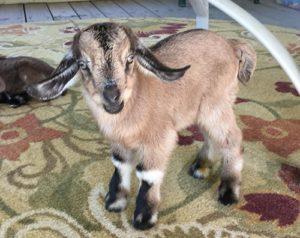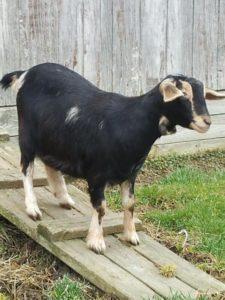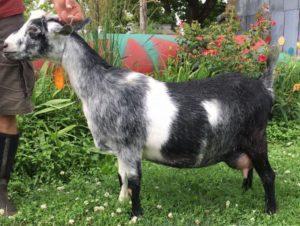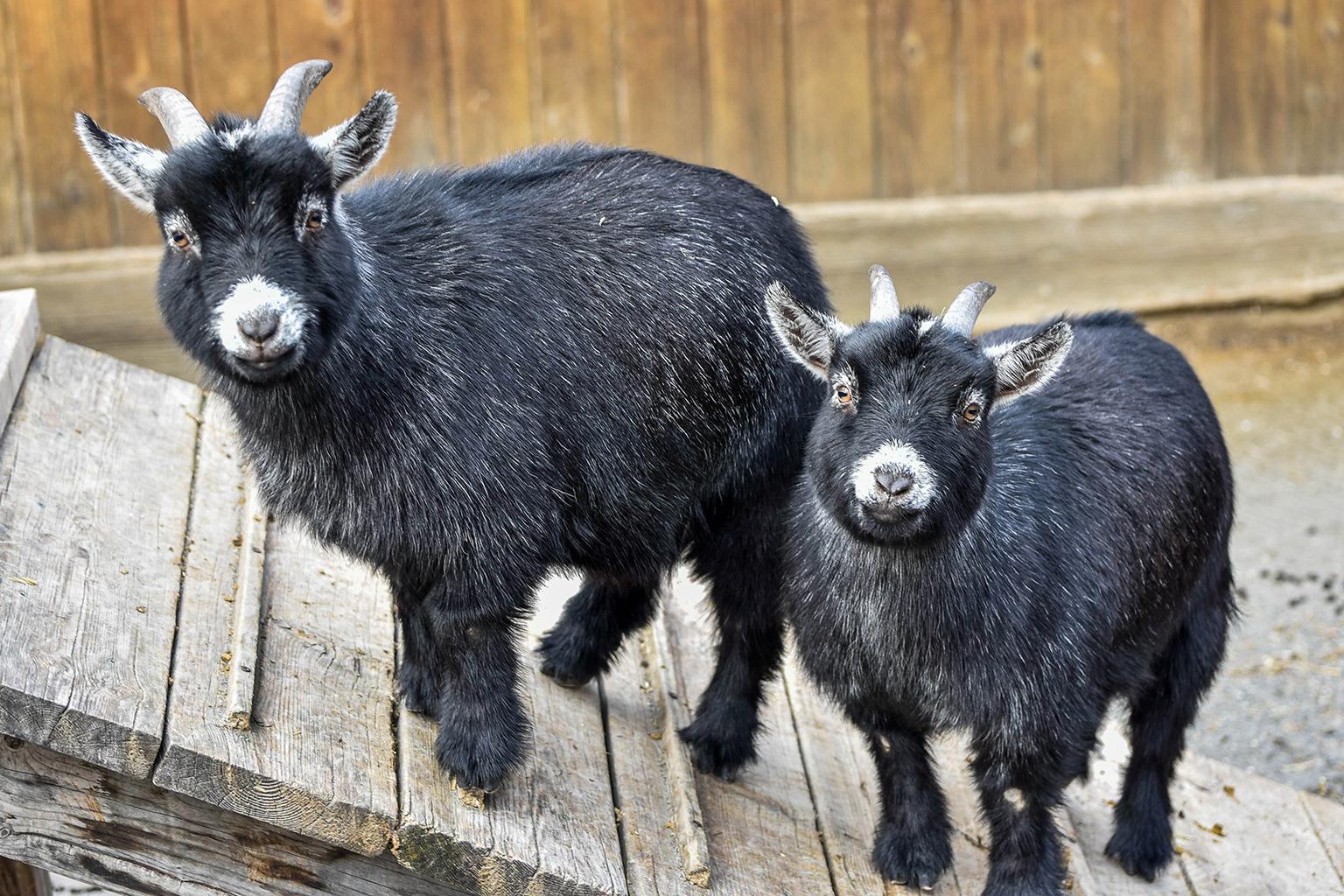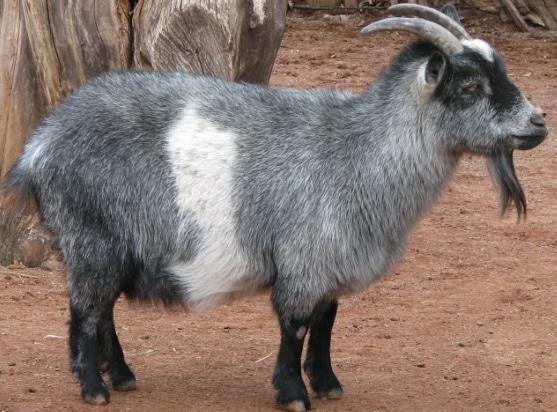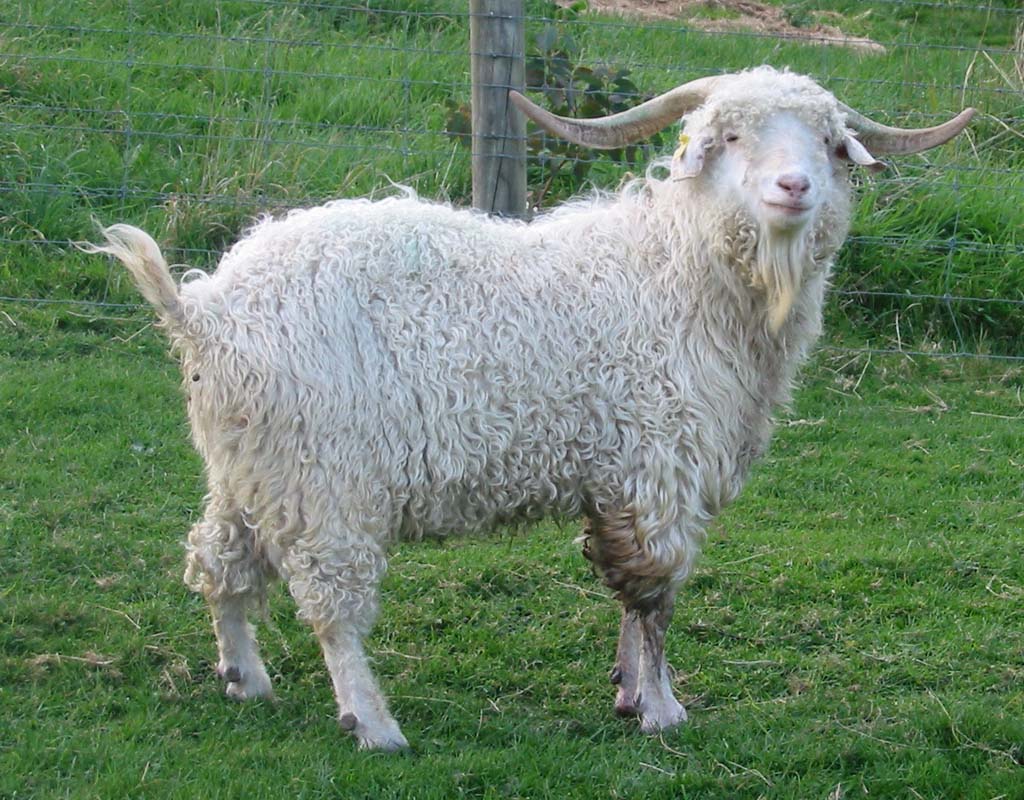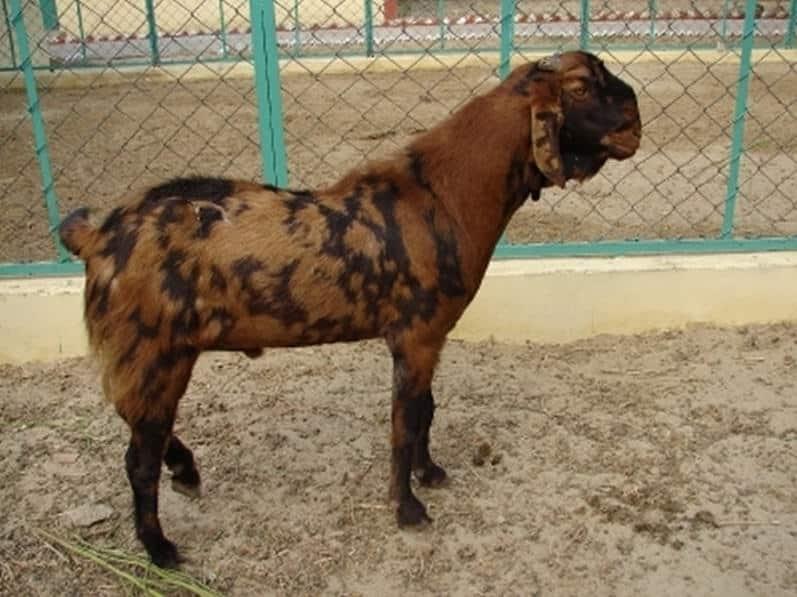Kinder Goat
Kinder goat, an American domestic breed, developed in Washington in the United States of America after an American pygmy buck was crossed with Nubian does. The resulting kid was small in size and adept at producing milk and meat. The process of selective breeding continued, with the following generation of kinder goats, eventually evolving as small, compact, and well-muscled breeds with a versatile purpose.
| Also Known As | Not recorded |
| Physical Characteristics | Muscular and stocky with slender legs, medium-sized tubular ears sticking out of the sides of their head, and short horns placed backwards |
| Temperament/Personality | Playful, sociable, curious, and intelligent |
| Color | Brown, black, white, with spotted patterns and patches |
| Coat | Short and glossy, with silky, shiny hair |
| Size | Small |
| Weight | Male: 61 kg (135 lb); Female: 52 kg (115 lb) |
| Height | Male: 51-71 cm; Female: 51-66 cm |
| Uses | Milk, meat |
| Diet | Grass, hay, grains |
| Lactation Period | 305 days |
| Lifespan | 13-15 years |
| Climate Tolerance | High (adapts to varied climatic conditions) |
| Country of Origin | United States (Washington) |
| Standard and Qualification Information | Kinder Goat Breeders Association |
History and Development
The year of its development dates back to 1985 at the Zederkamm Farm in the Snohomish city of Washington owned by one Ms. Pat Showwalter. The farm was undergoing a crisis after one of their old Nubian bucks passed away, leaving the doe sans a mate.
At this point, the small pygmy buck on the farm was bred with the Nubian does, the outcome being the birth of three kids, that went on to be the founding stock of the kinder. While one of them, named Liberty, remained at the farm, the other two were moved to varied locations nearby. Liberty gradually developed into a charming goat capable of bearing about six kids annually and even producing sweet milk.
The trend of crossbreeding continued, the aim being to develop more such hardy goats with a dual utility – as milk and meat producers.
The Kinder Goat Breeders Association was formed in 1988, while the herd book started in 2006, with about 3000 goats registered. Besides Washington, where it originated, its popularity spread to 13 other states of the U.S and even to Brazil and Canada.
The Food and Agricultural Organization (FAO) deemed these goats endangered in 2007. The Domestic Animal Diversity Information System mentioned its status as unknown.
Milk Production
Over the years, they have excelled as great dairy goats, their milk having a sweet and creamy flavor with a high amount of butterfat. ‘In fact, the doe is said to produce about 1500 lb milk during her 305-day lactation period that has about 5.5% – 7% butterfat, ideal for making cheese.
Meat Production
They make for desirable meat animals too. These small-sized goats are hardy and well-muscled, reaching about 70% of the adult weight by the time they are one. The kids weigh about 80 pounds at 14 months of age, dress out at about 50 pounds, producing 250 pounds of meat yearly.
Kidding
The Kinders are aseasonal breeders, breeding throughout the year. The doe mainly delivers twins or triplets in a single litter. Some even have about 4-5 kids in one go—their gestation periods, like most other goats, span between 140 and 160 days. The doe displays excellent mothering skills, caring for her kids well, and being immensely protective towards them.
Interesting Facts
- The credit of launching this breed and bringing it into prominence goes to goat enthusiasts Teresa Hill, as well as Kathy Gilmore and Daralyn Hollenback.

